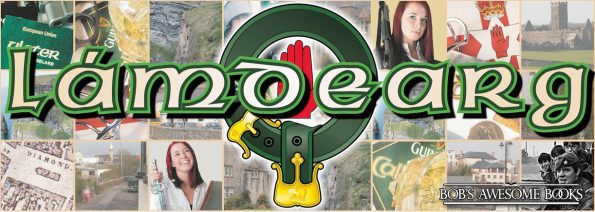The name is Gaelic and dates back to the earliest history of Ireland and the establishment of its first and only royal family. The first high king of Éirin, Flaithbertach ua Néill, is said to have established a benevolent organization to help his people to settle into the land and prosper and, at times, deal with hostiles that they found on the island. The legendary competition between his two sons for the inheritance of the throne had established the Red Hand as the heraldic symbol of the royal family, that tradition continues to this day. The name Lámdearg is Gaelic for “red hand.” The reining high king or high queen (rí ard or banrión ard) of each generation has headed up the shadowy organization since the sixth century.
Over the centuries, some kings and queens of Éire have used the Lámdearg as their own personal crime syndicate, a means to pillage and rule with an iron fist for their own profit, often in league with corrupt world powers. Shane O’Neill, for example, led raids north from Armaugh during the years of the great massacre which began in 1642. He and his raiders are thought to have murdered thousands (if not tens of thousands). But since World War II, its leaders have all but abandoned overt organized crime and dark allegiances in favor of covert economic and political manipulations and professional collaborations.

After thousands of years, the Lámdearg has built an empire of influence and power throughout the world. They are today intrenched into virtually every Fortune 500 company around the globe, sovereign world governments and intelligence agencies. They maintain their own covert intelligence units and some of the most highly-trained and secretive mercenaries. The modern day Lámdearg are best known for hostile corporate take-overs, political and military coups and black ops where official and/or government entities fear to engage.
The royal lineage continues to exercise its underground power, patiently biding its time until the day that an independent and powerful Republic of Ulster will be restored to the Emerald Isle. Politics and politicians come and go, but the influence and power of the Lámdearg continues. Throughout the region of Northern Ireland, the red hand is seen in heraldry, street signs, municipal buildings and emblazoned on innumerable souvenirs and trinkets sold to tourists but it remains the symbol of the House of O’Neill and the shadowy Lámdearg.


